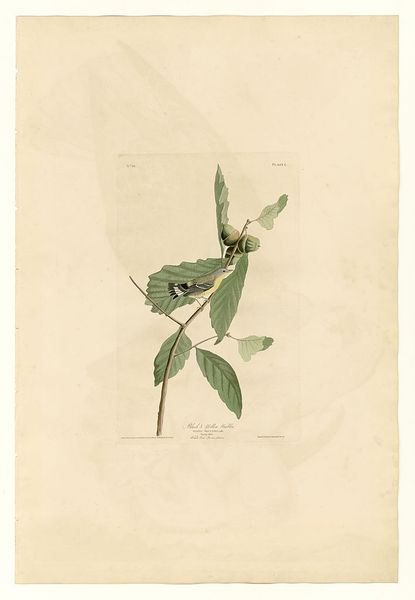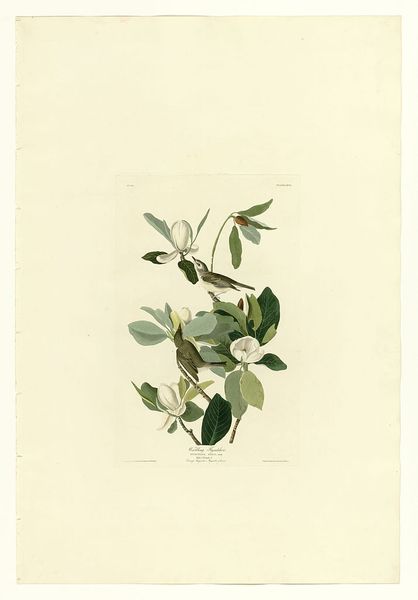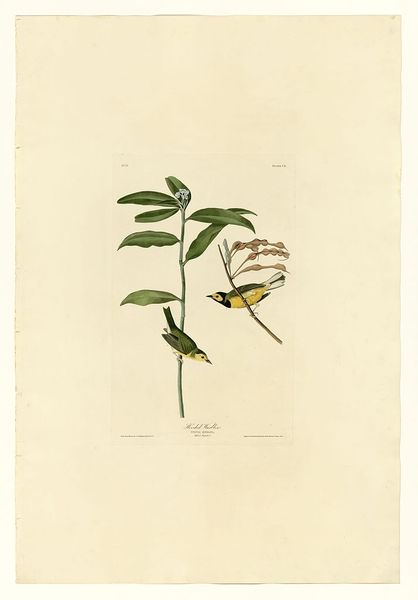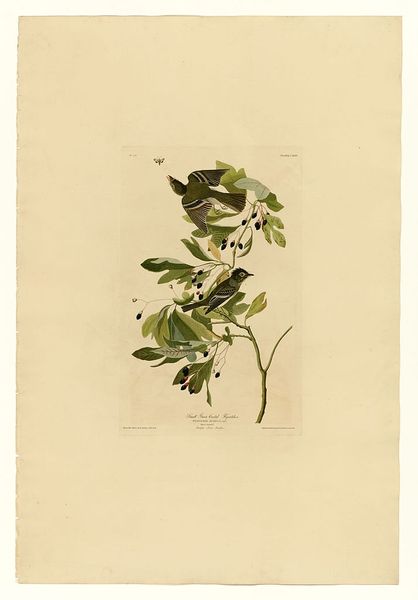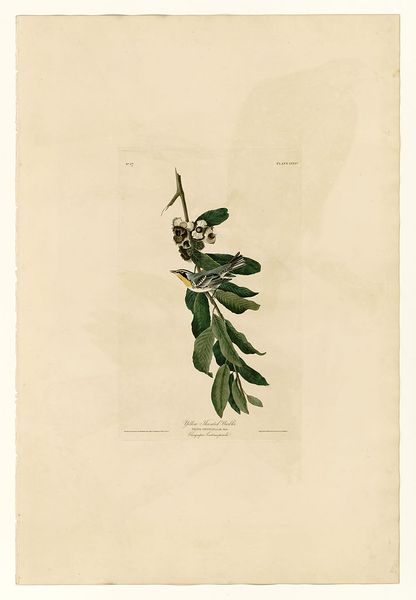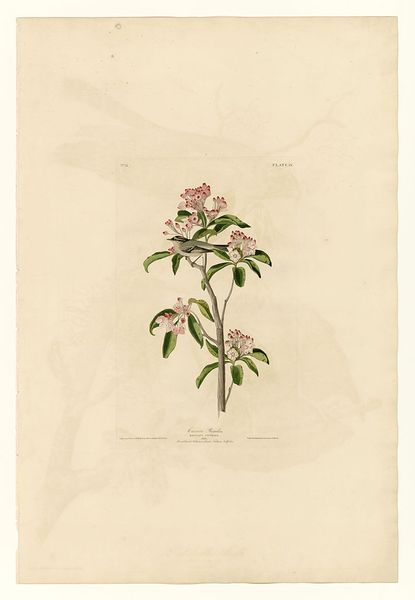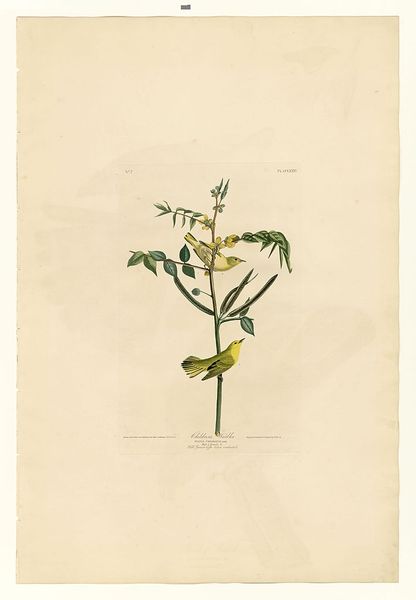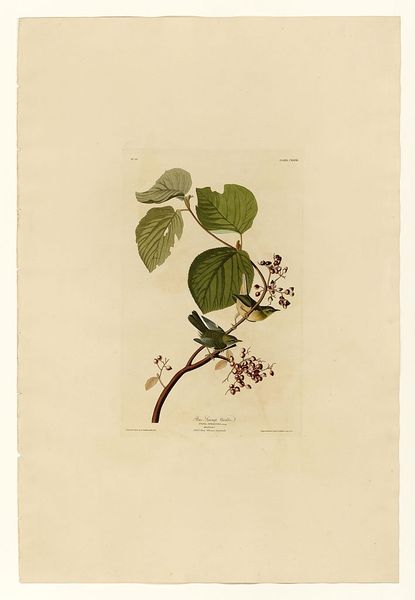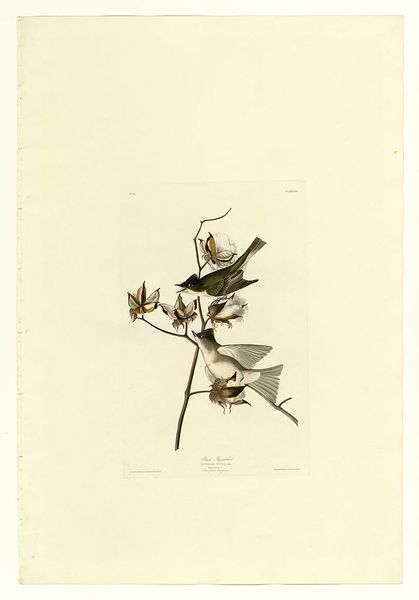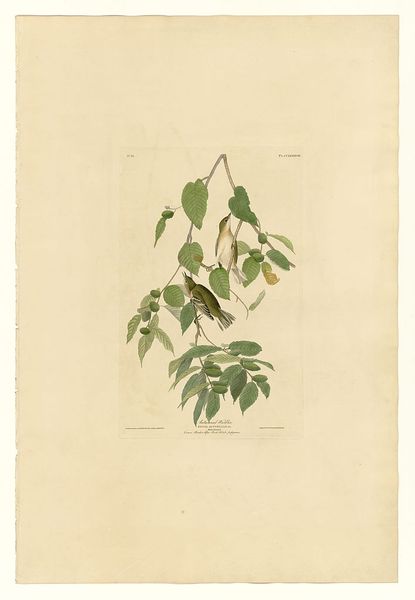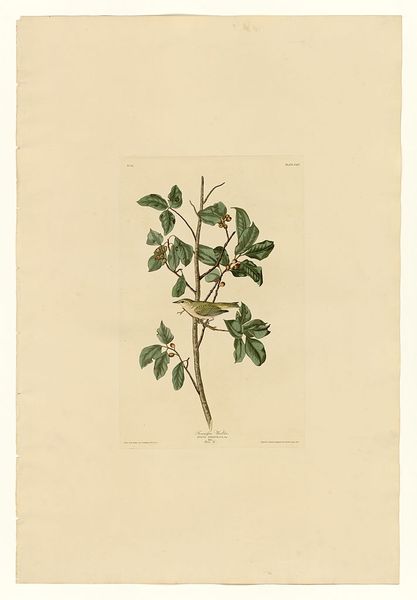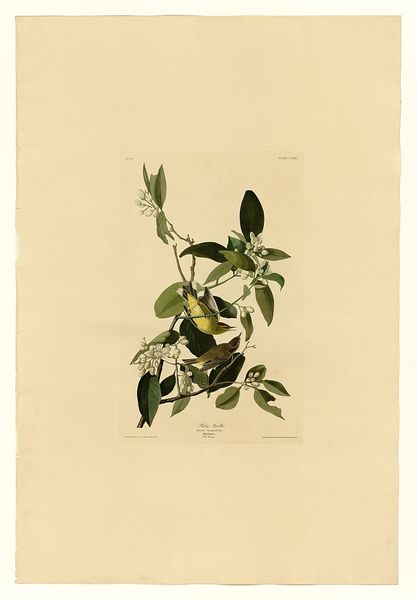
drawing, print, watercolor
#
drawing
#
16_19th-century
# print
#
botanical illustration
#
watercolor
#
watercolour illustration
#
naturalism
#
realism
Copyright: Public domain
Editor: So this is Plate 38 from John James Audubon’s "Birds of America," depicting the Kentucky Warbler. It looks like a watercolor drawing, maybe also a print? I find the detail of the birds themselves quite striking, particularly juxtaposed with what seems to be almost careless watercolor rendering in the flower. How should we interpret this from an art-historical perspective? Curator: Well, let's consider the production. These weren’t mere observations; they were carefully constructed artifacts. The labor involved in Audubon’s prints is significant. Consider the sourcing of materials: the paper, pigments, and printing plates. Think of the cost associated with a project of this scale during the 19th century! How does the availability, trade, and production of these materials inform the social context? Editor: I see what you mean. The accessibility of these prints would have been limited by the materials required. It was definitely a luxury item. Does that contrast with the realism on display here? I mean, is Audubon interested in accuracy or more in flaunting his materials? Curator: Accuracy certainly played a part. But what is "accuracy" in this context? Was it a scientific pursuit, or an aesthetic one mediated by cultural values and available materials? For instance, how does the choice of watercolor as a medium affect our understanding of naturalism, or realism? Was this medium capable of presenting ‘accuracy’? Consider the social impact and consumption of these prints by the wealthy elite of the time; they’re consuming nature in a controlled format. It's a means of possession, wouldn't you say? Editor: That's fascinating. So, it’s not just about documenting the birds but also about the materials, the process, and the consumer of this imagery as well! I will definitely look into that. Curator: Indeed. It reveals how intertwined art, labor, and societal structures are in the 19th century. The Kentucky Warbler becomes an object caught within networks of material culture and social class.
Comments
No comments
Be the first to comment and join the conversation on the ultimate creative platform.
